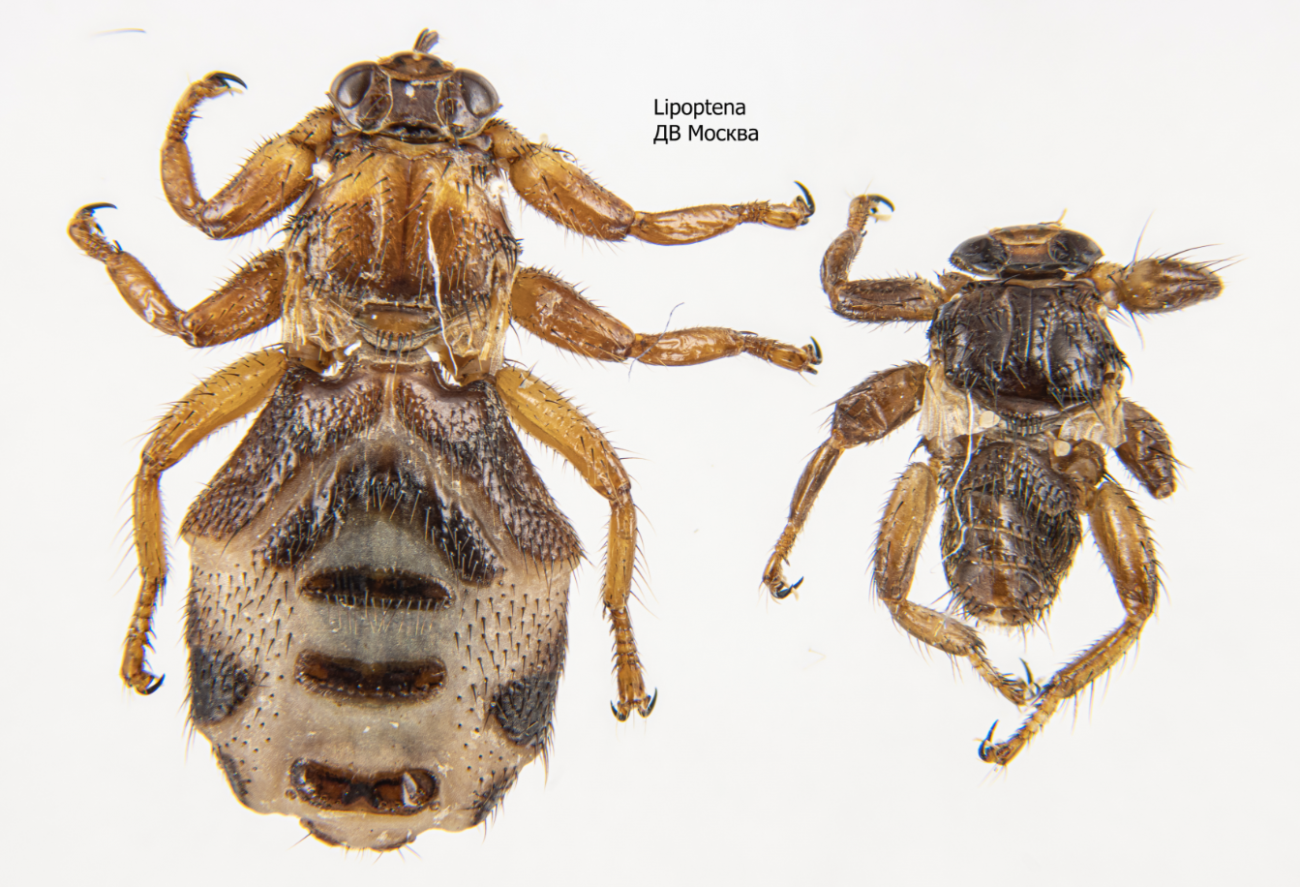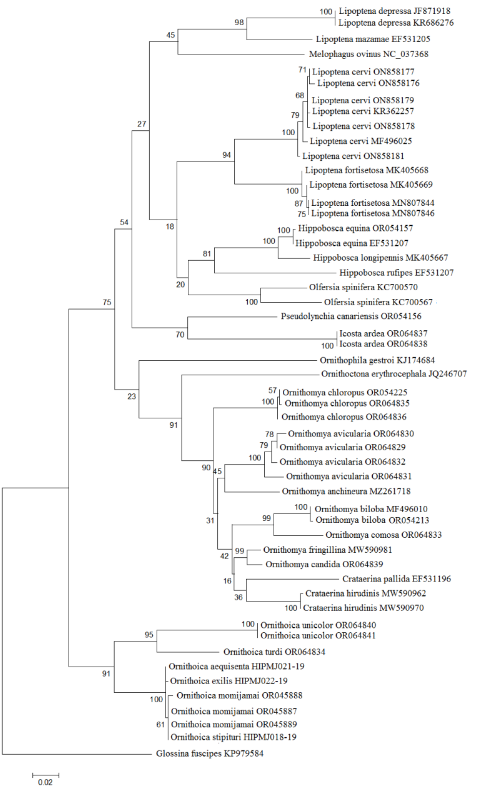
Hippoboscidae bloodsucking flies have a large number of unique morphological and physiological adaptations, most of which are closely related to their ectoparasitic lifestyle. Abdominal morphology is of great importance in the life of Hippoboscidae flies. The larva develops in the abdomen, and females lay a prepupa. Changes in abdominal morphology affect the ability of the abdomen to stretch and, therefore, to bear larvae. Representatives of the genus Lipoptena Nitzsch, 1818 have been divided into several groups according to the morphological features of the species. The genus Lipoptena itself currently includes 29 species.
Modern data on the morphology and molecular phylogeny of Hippoboscidae flies show some inconsistencies in the taxonomy of this genus. Based on the morphological and molecular analysis, researchers from the A.N. Severtsov Institute of Ecology and Evolution RAS (IEE RAS) proposed a new classification of the genus Lipoptena Nitzsch, 1818. The subgenus Lipoptenella Bequaert, 1942 was elevated to the rank of genus.

Fig.2: Phylogenetic tree of the family Hippoboscidae. The species L. cervi and L. fortisetosa are representatives of the genus Lipoptena Nitzsch, 1818. The species L. depressa and L. mazamae are representatives of the new genus Lipoptenella Bequaert, 1942.
“In the genus Lipoptena, the morphological groups “cervi” and “capreoli” were identified, which do not coincide in composition with the groups identified earlier. A key was compiled for the genera of the subfamily Lipopteninae and keys for all species from the genera Lipoptenella and Lipoptena,” said Alexandra Yatsuk, a researcher at the IEE RAS.
The work was published in the journal:A.A. Yatsuk, T.A. Triseleva, A.V. Matyukhin, E.P. Nartshuk New data on classification of Hippoboscidae (Diptera): Genus Lipoptena Nitzsch, 1818, Euroasian Entomological Journal, 23(6):353-359
